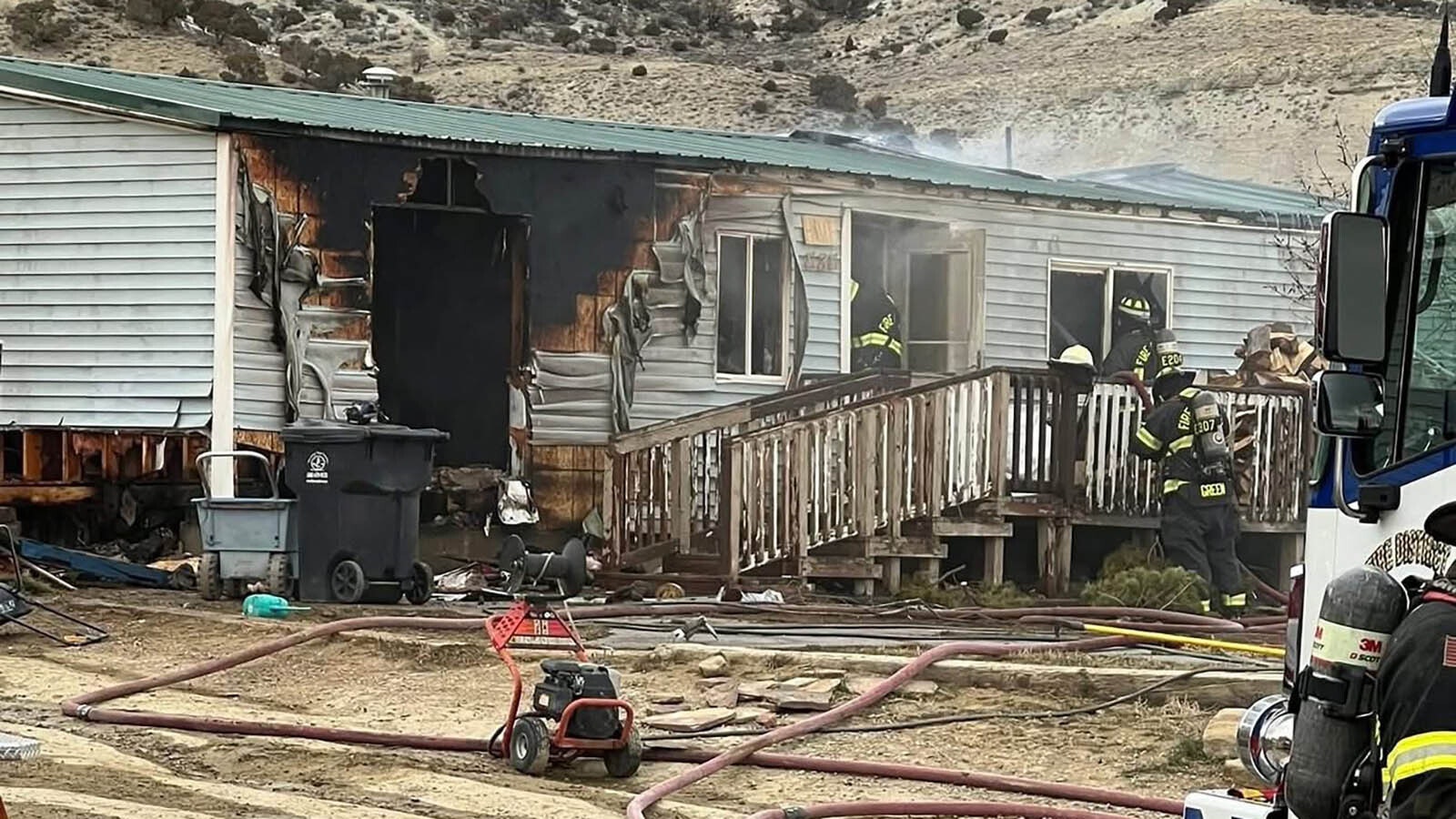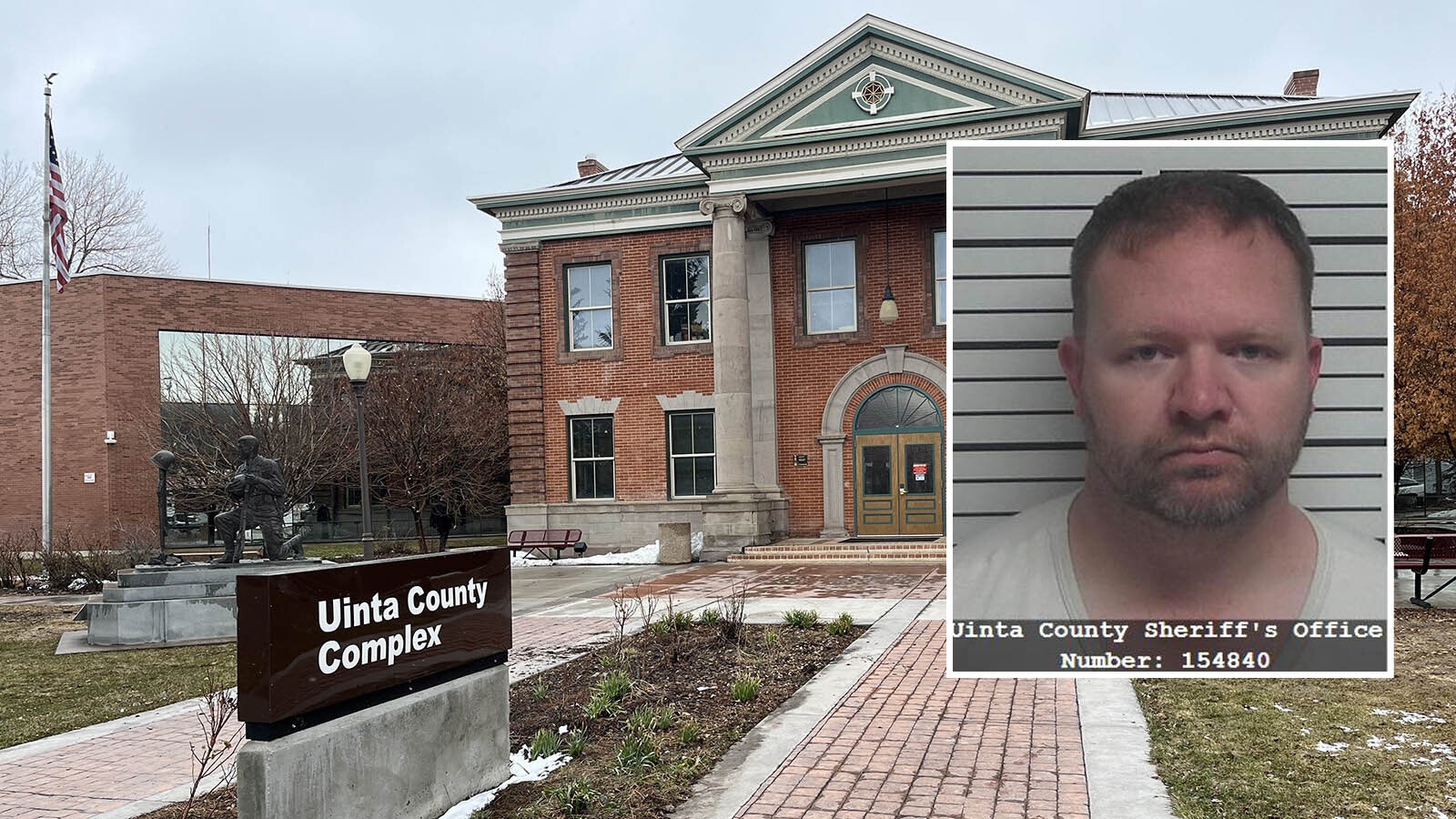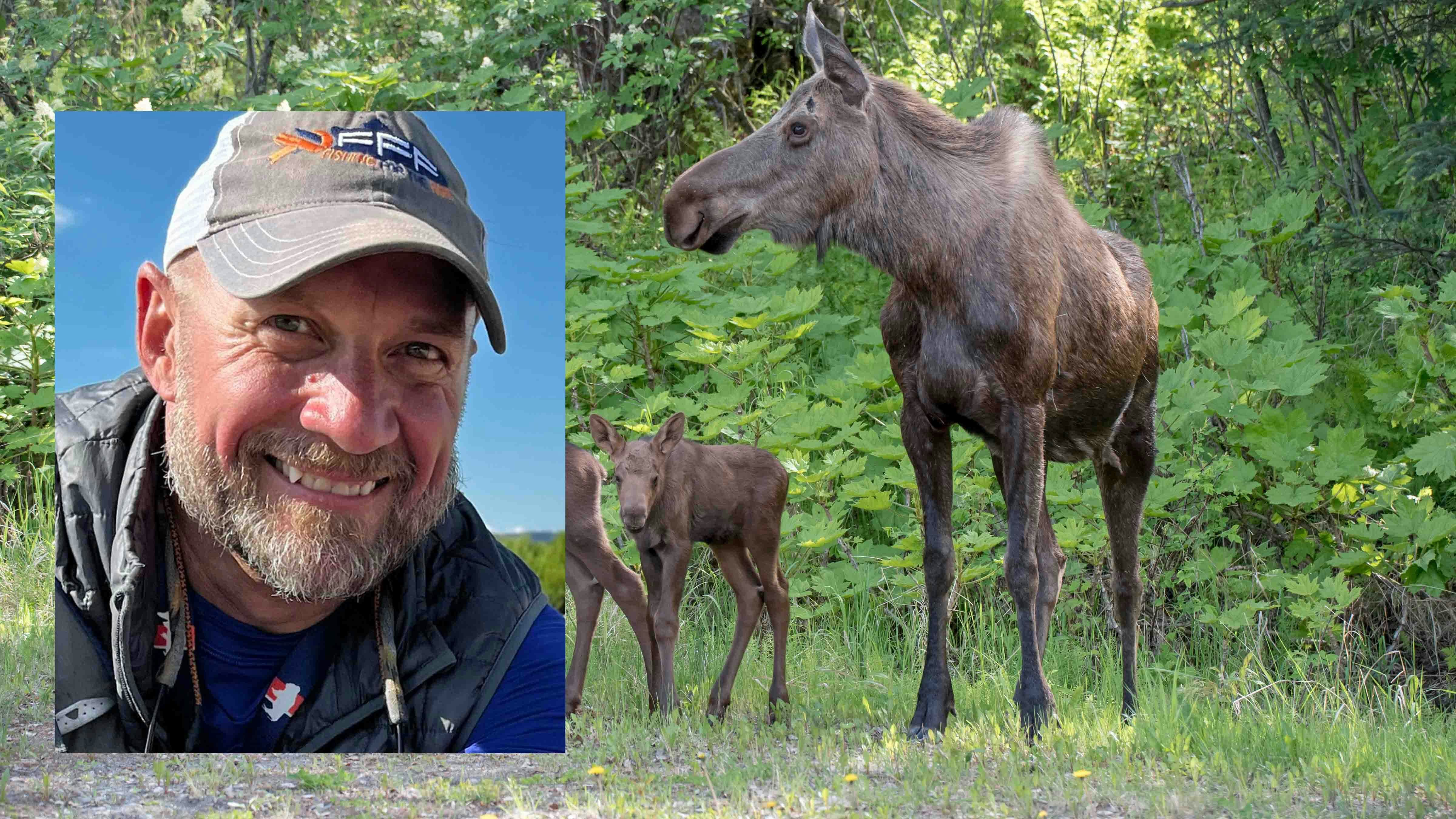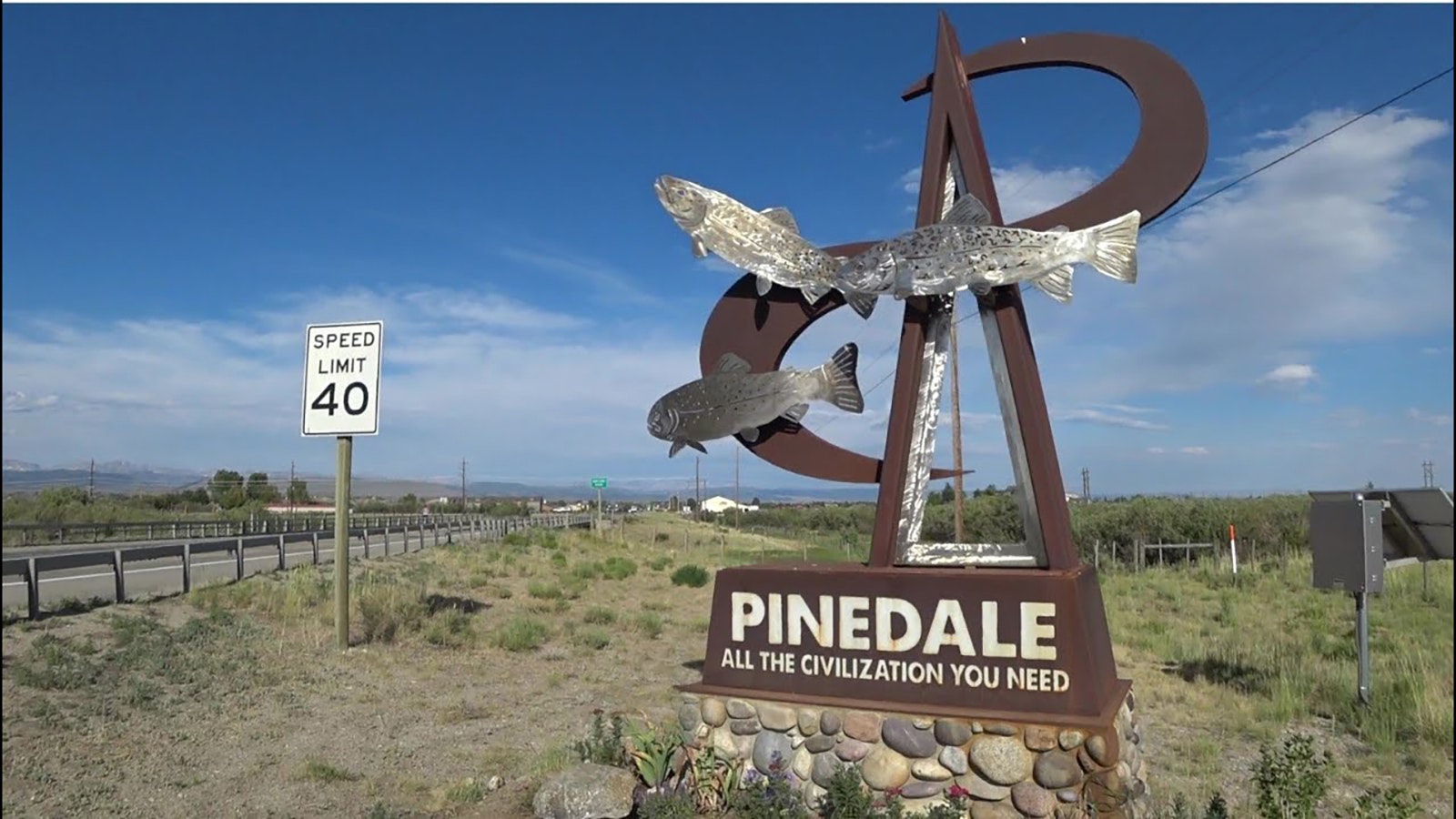This is the third part of a series. Part one detailed how new evidence has been unveiled that may crack the D.B. Cooper case, America’s most notorious and only unsolved hijacking 53 years later. Part two explores the potential impact of new bombshell evidence in the decades-old investigation.
For more than 50 years, the D.B. Cooper case has remained one of America’s most notorious mysteries, captivating generations of detectives, federal agents and amateur crime solvers.
That fascination turned into a worldwide frenzy last month when Cowboy State Daily revealed that a sleuth who has devoted more than two decades to investigating the case found potential new evidence, seized by the FBI, that may finally crack the case.
News of a parachute that, by description, appears to match one that the hijacker was given for his daring mid-flight getaway and found on the property of a now-deceased man long considered a suspect, filled the airwaves of CNN and the pages of newspapers such as The New York Post and The Seattle Times.
But the revelation has sparked both support and skepticism that the 53-year-old case may finally be solved.
What it has done is reinvigorated interest in the unsolved crime that the FBI had stopped actively investigating eight years ago, bringing back to light the various theories as to the hijacker’s real identity. The attention has helped put a spotlight back on the investigation, making many believe that closure is close at hand.
The only unsolved hijacking in United States history began Nov. 24, 1971, when an airline passenger on a flight to Seattle handed a stewardess a note on a cocktail napkin, warning her that he had a bomb in his briefcase.
The passenger, who had checked into the flight under the name “Dan Cooper,” demanded $200,000 and four parachutes.
The flight touched down in Seattle, authorities ceded to his demands and the hijacked plane took off, under his instruction, headed back toward Portland.
Somewhere on the flight path, he jumped out with the money and vanished. Over the past five decades, some of the ransom cash was found, as well as other evidence.
The mystery surrounding the hijacking generated dozens of books and movies, as well as many suspects and theories that the FBI and hundreds of amateur detectives have investigated to no success.
Last month on the 53rd anniversary of the hijacking, retired commercial airline pilot and YouTuber Dan Gryder shook up the dormant case when he announced that the parachute that he’d found in 2022 had been taken into custody.
The parachute rig was found in Cove City, North Carolina, on the family property of Richard McCoy, a convicted hijacker in a similar case.
After a lifetime of silence and with knowledge of the discovery, McCoy’s children, Chanté and Richard III, “Rick,” came forward saying they, too, believe their father is the infamous hijacker who disappeared in 1971, never to be seen or heard from again.
McCoy has long been on the radar of law enforcement and amateur sleuths after pulling off a near copycat hijacking in Utah less than six months later for which he was caught after successfully making it home with the $500,000 ransom.
He was sentenced to 45 years in prison but ultimately escaped from a maximum-security prison in Pennsylvania and was shot and killed by the FBI about three months later.
The FBI would not confirm or deny that it is actively re-investigating the Cooper case, nor would the agency provide an update on the status of the parachute or other evidence agents acquired from the McCoys related to this case.
The agency continued to refer Cowboy State Daily to the bureau’s 2016 status update that declared the case inactive pending new evidence.
About Time
Other case experts were more forthcoming on how they view the discovery.
Lars Larson, a nationally syndicated conservative talk show host based in Portland, Oregon, told Cowboy State Daily that he was practically jumping up and down when he heard that the new evidence IDs McCoy. He said he’s been “ringing the bell” for the past 20 years, even hosting a special show every Thanksgiving on the anniversary of the hijacking, declaring that McCoy and Cooper were the same guy.
He was a young television reporter when he got hooked on the D.B. Cooper story after reading the book “D.B. Cooper: The Real McCoy” by Russell Calame, former FBI special agent in charge (SAC) of the Salt Lake City office, and Bernie Rhodes, McCoy’s parole agent in the Utah hijacking.
The book argues that given the similarities, both hijackings had been pulled off by McCoy. McCoy’s widow Karen sued the publisher in 1994 and the book went out of print.
Karen was not the only one upset by the book. Internal FBI documents show one of the original case agents from Seattle contacting the Utah bureau to complain about Calame's role and suggesting he was motivated by profit.
But not before Larson got his hand on a copy and produced a segment on his news program, “Northwest Reports,” in 1992.
Similarities
Today, more than 20 years later, Larson remains convinced McCoy was D.B. Cooper.
The similarities are striking, he said, which Calame and Rhodes laid out in detail from the vernacular used by both hijackers to where they sat on the plane and the directions each gave to the crew among other details, including where the fuel trucks should park during refueling.
Among the similarities noted in the two hijackings were things that Calame argued only the hijacker would have known, because very few details in the Cooper hijacking had been made public at the time. Little things stuck out to Calame, including the vernacular of both hijackers, who used “pilot lingo” like “aft staircase” and “interphone” when communicating with pilots and crew.
These are words that Calame said ordinary people would likely not know.
The authors also said that the hijackers both told crew “no funny stuff,” which was well documented by witnesses in the Cooper case. They further note the similar positioning of the refueling trucks when the planes stopped to refuel and gather the parachutes and money.
Jim Housley, former assistant U.S. district attorney in Salt Lake City, agreed. He prosecuted McCoy in the Utah hijacking and found the circumstances in both hijacking to be eerily similar.
In fact, he concluded that the standard of evidence that he’d seen would have a “fair chance” in convincing a jury that McCoy was indeed Cooper.
The FBI, however, remained adamant that McCoy had been definitively ruled out.
Improvements
Larson further pointed to improvements in the Utah hijacking that Calame and Rhodes noted in their book, arguing that McCoy had learned from his mistakes in his first hijacking.
For starters, Cooper had the flight attendant sit beside him, while McCoy ordered the flight attendant sit in the seat in front of him so she presumably couldn't get a good look at him.
Furthermore, in the Cooper hijacking, authorities gave him a bag with the zippers removed, which made it hard for him to hang onto to the money, giving him a reason to repeat the crime less than six months later.
This time, however, McCoy brought his own parachute, bag and other equipment to make the jump more feasible, the authors argued.
Another improvement, Larson noted, was in the first hijacking, the pilot and flight crew got a good look at him through a peephole in the cockpit, whereas in the second hijacking, McCoy taped over it.
McCoy also sat in the last row of seats just like Cooper had.
“He knew what he was doing,” Calame was quoted saying in the news segment. “He really did.”
Aliases
Gryder also noted the similarity between the two aliases — Dan Cooper and James Johnson, the name used by McCoy in the Utah hijacking — in that they were both based on aviation figures.
According to a 2009 release from the FBI, the alias “Dan Cooper” was likely based on a French comic strip by Albert Weinberg about a fictional hero from the Royal Canadian Air Force.
The alias “James Johnson” used by McCoy may be a homage to James Kenneth Johnson, a well-known colonel in the U.S. Air Force. During the Korean War, Johnson was a double ace who was largely credited with shooting down 10 enemy aircraft. Like McCoy, he was a highly decorated war hero.
During his two tours of duty, Gryder said that McCoy likely stopped at a mess hall at a military base in Japan that was named after Johnson and was decorated with his awards.
“It’s likely that he used two famous heroic alias names that were both very significant to him.” Gryder said.
McCoy Not The Guy
At least one former FBI agent on the case vehemently disagrees with this supposition as does Ryan Burns, a Mississippi-based criminal defense attorney and administrator of the Northwest Hijacking (NORJAK) website.
Larry Carr, the retired FBI special agent who was in charge of the Cooper case from 2007 to 2010, said the FBI long ago ruled McCoy out as a suspect. In fact, internal FBI documents show that McCoy was eliminated as a suspect as early as 1974.
Carr said that the evidence — including thousands of interviews and witness statements — speaks for itself.
Most notably, he said, was that none of the eyewitnesses, including the three flight attendants, identified McCoy as Cooper when presented with his mugshot following the Utah hijacking.
For starters, Cooper was estimated to be in his mid-40s with swarthy skin and dark hair and eyes.
By contrast, McCoy was in his late 20s with blue eyes. Gryder and the McCoy children argued that McCoy would no doubt have worn makeup to disguise himself just as he’d done in the Utah hijacking when he’d donned makeup, a wig and mirrored sunglasses like Cooper wore.
Witnesses, however, all say the hijacker did not appear to be wearing makeup.
They also argued that the bourbon and soda Cooper ordered on the plane had been a ruse for the strait-laced Morman man to disguise himself much like the Raleigh cigarettes that the hijacker smoked. In fact, they believe that the cigarettes were something of a calling card in homage to McCoy’s hometown and a brand that back then accounted for less than 2% of all cigarette sales.
Eyewitness testimony aside, Carr said that McCoy’s alibi places him squarely in Utah on the day of the hijacking based on statements from his wife, Karen, and a visiting student.
Mysterious Student
The FBI has record of McCoy being in class at Brigham Young University the morning of Nov. 23, where he also wrote a check on campus later that same day, according to case evidence.
There’s no record of McCoy on the 24th, however, because neither of his classes took roll that day.
The following day, Thanksgiving, Karen told agents that McCoy had Thanksgiving dinner at home, which was verified by a BYU student who said he’d also spent the holiday with the family.
The student’s name is redacted on the report, but he’s described as a master’s student from southeast Asia who reportedly met McCoy in a law enforcement class, according to a statement taken in August 1972.
The student said he arrived at 10 a.m. and that McCoy was home.
McCoy’s daughter, Chanté, was only 5 at the time and told Cowboy State Daily she can’t recall the holiday and whether this student ate dinner with them.
Karen passed away in 2020, but her sister, Denise Burns, was also there that day. Initially, Burns swore in an affidavit to investigators that both McCoys had been home for Thanksgiving weekend.
She later recanted this testimony to Gryder in 2021, however, when she told him in a taped recording that the couple had actually been gone that entire weekend for about three to four days. She thought they’d gone to California. Denise said she had stayed home to watch the McCoy children.
Traced To Vegas
Not up for debate is the fact that Richard McCoy was in Las Vegas on Thanksgiving Day, according to a signed receipt from a Las Vegas strip gas station that included his signature and North Carolina license plate number. Furthermore, someone made a two-and-a-half minute collect call from the Tropicana Hotel to the McCoy home that same evening.
FBI records also show that McCoy's Bank of America card was used for gas purchase in Provo on Nov. 25 as well as gas purchase in Cedar City, Utah, that same day. The following day, the card was used again for a gas in Cedar City.
Karen later told Chanté that the couple had been in Las Vegas the same weekend of the Cooper hijacking. She said they’d gone for a delayed honeymoon, even though they didn’t gamble and didn’t have any money for a vacation and had to sleep in the car.
Gryder and the McCoy children believe that Karen was complicit in both hijackings, though she never admitted it. They think that McCoy likely stopped in Vegas enroute back to Utah to launder the unknown amount of money he’d put into his jacket before jumping.
Both Carr and Burns acknowledge the existence of the receipt and phone call and say they think the couple drove the roughly 380 miles from Provo, Utah, to Las Vegas after they finished eating their early afternoon Thanksgiving meal.
Denise, who is likely the only person who can clear up the mystery, did not answer Cowboy State Daily’s phone calls for comment.
Undeterred
Carr and Burns, however, remain unmoved that Gryder has found a vital missing piece to solve the puzzle. In their minds, McCoy was ruled out as a suspect decades ago based on reams of evidence.
“There’s 50 things alone that would eliminate him,” Burns told Cowboy State Daily. “I mean, it’s insane.”
Likewise, Carr said the agency ruled McCoy out years ago, despite their desperate desire to close the case. He said that when he took over, he was also convinced Cooper was McCoy until he started digging into the evidence.
“Everybody in the FBI wanted McCoy to be Cooper, and they worked their asses off to do it,” he said. “And what they found was McCoy didn’t do it.”
In fact, the more Carr delved into the evidence, the more he became convinced that the hijacker likely didn’t even survive the jump. In his mind, he believes the trail of evidence begins and ends when Cooper left the plane.
Nothing To Do With It
Carr was one of the first people Gryder notified when he first uncovered the rig and parachute in fall 2022. Gryder even offered to fly out Carr from Florida to North Carolina to take a look at it in person.
Carr refused.
“I wanted nothing to do with it,” Carr said. “He wanted to fly me up there to be part of this big discovery, right? And of course, I know that it’s an impossibility for McCoy to do it.”
To Gryder, this was just further proof of Carr’s closed mindedness when it came to solving the mystery and not wanting to admit that he and his agency had screwed up in discounting McCoy.
Not so, Carr said. He just didn’t see the point given the body of evidence ruling him out, beginning with the rig itself.
He said the physical description of the rig doesn’t line up, primarily the presence of “D” rings on the pack.
Earl Cossey, a skydiving instructor and rigger, Earl Cossey, who packed the four parachutes – two front, two back – used in the D.B. Cooper skyjacking told the FBI that the rig didn’t have “D” rings, according to FBI documents.
In a November 1971 interview with FBI, Cossey described the backpack parachute as a “sage green nylon container, model NB6 (Navy backpack 6) with sage green nylon harness, which harness has no “D” rings to mount a check pack,” according to the FD-302.
A “D” ring is a metal ring shaped like a “D” that was used to attach a reserve parachute to the back parachute. Back in the early 70s, there were sport rigs as there are today, Gryder explained, so skydivers made makeshift sport rigs by attaching a reserve belly chute to their backpacks.
However, in later interviews with author Bruce A. Smith and others, Cossey changed his tune, saying that he’d modified the bailout parachute for personal use, which would require moving rip cord as well as cutting straps, adding “D” ring attachments and enlarging the pack tray to hold the larger chute as Gryder illustrates in his second D.B. Cooper YouTube video.
Unsolved Murder
According to a Seattle news outlet, Cossey died from blunt force trauma to his head. To date, there has been no arrest.
Over the years, Cossey played a key role in identifying the parachute rig. Carr said that they’d taken parachutes to him throughout the years whenever one turned up in evidence.
In an earlier article, Cossey told Seattle Fox4 that, “Every time they find squat, they bring it out and open their trunk and say, ‘Is that it?’ and I’d say, ‘Nope, go away.’ Then a few years they come back.”
Carr, however, doesn’t put much stock into what Cossey may have later said. His statements to the FBI were consistent in the days and weeks following the hijacking, Carr said. Also, Cossey liked “feeding the media “bullshit” and considered it a sport.
Gryder said he doesn’t buy it. He’s convinced that the distinct and “poorly executed stitching” characteristic of Cossey’s work and other modifications make it a “one-in-a-billion” rig.
While the FBI is not commenting on the latest discovery, the agency also hasn’t returned it to the McCoys like it had other parachutes in the past the agency ruled out. But it has now been more than a year since Gryder and the McCoy children gave agents the custom-altered parachute. It remains in the agency’s custody.
Carr said he chalks this move up to overzealous new agents in North Carolina who, like him years ago, may be grasping at clues to try and pin the crime on McCoy, an easy suspect to blame.
Lack Of DNA
One thing is certain as far as Carr is concerned. Any DNA that can be extracted from the parachute will prove fruitless because there’s scant DNA in the file to compare it to.
Carr said that though the agency was able to retrieve three partial DNA samples from the necktie left on the airplane by the hijacker, there’s no definitive way to conclusively analyze it because the necktie had been passed around by many agencies — and many hands — before the samples were taken.
He said the best thing they can do with the DNA is to eliminate people using the partial sample.
McCoy’s son Rick agreed to let the FBI take DNA from him in 2022, but Carr said he has no idea where that stands because he’s been off the case since 2010.
Likewise, he said he has no idea if the FBI has other DNA or advanced technologies that might be helpful at this point.
Overall, however, he thinks the DNA is likely useless at this point as far as an investigative tool.
Lost Evidence
Adding insult to injury on the inconclusive DNA is the fact that the FBI disposed of the eight Raleigh brand cigarette butts left by the hijacker. When they didn’t get prints off them, the Las Vegas FBI lab threw them away.
“Apparently, they were considered to be of no investigative value after being processed by the lab,” Carr said.
They did find a hair on Cooper’s headrest, however, that was encased in plastic and preserved, which seemingly has also been misplaced, according to Carr’s knowledge.
He said he tried his best to find it before he left the case but had no luck. He’s guessing it’s likely somewhere in the Las Vegas office.
That said, Carr acknowledged that everything he knows dates back to his time on the case and he has no idea what’s been done on the case or if the hair has since been located.
“What they may have now or if that information has changed, I wouldn’t know,” he said.
Questioning Methods
For his part, Gryder questions the nature of the FBI’s case and its mode of gathering evidence on forms, which he said are second-, third- or fourth-hand accounts given to an agent that were later typed up by a secretary.
None of the statements were written or signed by witnesses, nor were they recorded, making them prone to inaccuracies and error and potentially ripe for bias, he said.
He outlined his concerns in his fourth installment of his D.B. Cooper video on his YouTube channel, “Probable Cause.”
Relying on memory and allowing agents to document interviews with eyewitnesses leads to inaccuracies, framing people and taking statements out of context, he said.
“You don’t have to look far to find many examples of this,” he said.
He thinks that McCoy embarrassed the agency by pulling off a second hijacking on top of the fact that they “bungled” the case from the start by searching for months in the wrong wooded spot in Washington state because they lacked an understanding of aviation in general and the plane’s flight pattern.
Anyone But McCoy
Regardless, only the FBI can solve this mystery once and for all, both Gryder and the McCoy children note. And despite it being the first known investigative move by the agency in more than a decade, they have been surprised by all the blowback.
“It’s like it’s anybody but McCoy,” Chanté said. “There seems to be an open-mindedness about other suspects except when it comes to my father.”
Some have even accused Gryder of planting the rig on the McCoy property, which Paul Webber, who had been living on the property at the time and showed Gryder into the outbuilding where it was stored, vehemently denied.
“That stuff was there for more than 15 years, and nobody ever touched it,” Webber said.
Critics like Burns and Carr say it’s not personal, it’s just where they believe the evidence leads. In Carr’s mind, the agency ruled out McCoy decades ago.
“I can't think of any, under any circumstances, that I would have given this any legitimacy,” Carr said of the parachute discovery.
Gryder, Larson and the McCoys disagree that their father has been ruled out because the FBI has yet to return the parachute or make a definitive decision either way.
Until then, they believe evidence will finally prove that McCoy is D.B. Cooper.
Contact Jen Kocher at jen@cowboystatedaily.com

Jen Kocher can be reached at jen@cowboystatedaily.com.





























